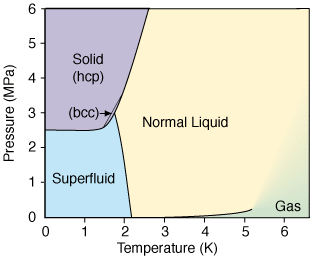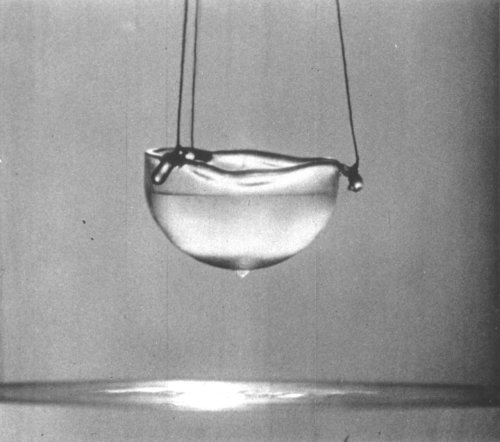#superfluid
Helium Bath Splash: Physicists Discover Surprising Phenomenon
While working with helium nanodroplets, scientists at the Department of Ion Physics and Applied Physics led by Fabio Zappa and Paul Scheier have come across a surprising phenomenon: When the ultracold droplets hit a hard surface, they behave like drops of water. Ions with which they were previously doped thus remain protected on impact and are not neutralized.
At the Department of Ion Physics and Applied Physics, Paul Scheier’s research group has been using helium nanodroplets to study ions with methods of mass spectrometry for around 15 years. Using a supersonic nozzle, tiny, superfluid helium nanodroplets can be produced with temperatures of less than one degree Kelvin. They can very effectively be doped with atoms and molecules. In the case of ionized droplets, the particles of interest are attached to the charges, which are then measured in the mass spectrometer. During their experiments, the scientists have now stumbled upon an interesting phenomenon that has fundamentally changed their work. “For us, this was a gamechanger,” says Fabio Zappa from the nano-bio-physics team. “Everything at our lab is now done with this newly discovered method.” The researchers have now published the results of their studies in Physical Review Letters.
Post link
Going superfluid!
A liquid goes superfluid when it suddenly loses all internal friction and gains near infinite thermal conductivity. The combination of zero viscosity but nonzero surface tension allows a superfluid to creep up walls and back down the outside to drip from the bottom of open containers, or to completely cover the inner surface of sealed containers. Lack of viscosity also allows a superfluid to leak through a surface that is porous to any degree, because the molecules can slip through even microscopic holes. Superfluids furthermore exhibit a thermo-mechanical effect where they flow from colder to warmer temperatures, exactly the opposite of heat flow as stated by the laws of thermodynamics! That implies the remarkable property of superfluids of carrying zero entropy. Because of this, a perpetual fountain can be set up by shining light on a superfluid bath just below a vertical open capillary tube, causing the fluid to shoot up through and beyond the tube until its contact with the air causes it to cease being a superfluid and fall back down into the bath, whereby it will cool back into the superfluid state and repeat the process.
So how does superfluidity work, exactly?
Makings of a superfluid
Physicists first got the inkling of something stranger than the norm when, around 1940, they cooled liquid helium (specifically, the 4He isotope) down to 2.17 K and it started exhibiting the above-mentioned properties. Since the chemical makeup of the helium didn’t change (it was still helium), the transformation to a superfluid state is a physical change, a phase transition, just like ice melting into liquid water. Perhaps for cold matter researchers, this transition to a new phase of matter makes up for the fact that helium doesn’t solidify even at 0 K except under large pressure - whereas ALL other substances solidify above 10 K.
 [Phase diagram of 4He,source]
[Phase diagram of 4He,source]
Helium is truly the only substance that never solidifies under its own vapor pressure.
Instead, when the temperature reaches the transition or lambda point, quantum physics takes hold and a fraction of the liquid particles drop into the same ground-energy quantum state. They move in lock-step, behaving identically and never getting in each others’ way. Thus we come to see that superfluidity is a kind of Bose-Einstein condensation, the general phenomenon of a substance’s particles simultaneously occupying the lowest-energy quantum state.
Read more:
“This Month in Physics History: Discovery of Superfluidity, January 1938”.APS News: January 2006
Based on a project by Barbara Bai, Frankie Chan, and Michele Silverstein at Cornell University.
Post link


